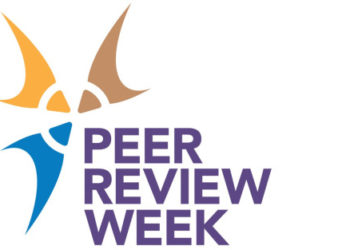
- NY Stock Exchange on Wall Street, Wikipedia
The world of scholarly communications may want to look closely at what happened on Wall Street, as some proposed practices would duplicate the very thing for publishing that caused the world’s financial institutions to collapse.
No, this is not a tale of Bernie Madoff, greed, or anything to do with personal character. This is a story of systemic problems–problems that exist by design–the kind that even the strongest personal integrity must struggle to overturn. I am referring, of course, to what it means to have authors pay for their own peer review.
At the core of the financial collapse were the corrupt practices of the rating agencies: Fitch, Moody’s, and Standard & Poor. If you want to market a security–say, a basket of mortgages or municipal bonds or corporate debt–you contact a rating agency. For a fee, the agency will rank the risk of your debt. The $2.5 billion in bonds and securities that Harvard University sold recently to offset its debt is not very risky; hence, it will pay a relatively low interest rate. Meanwhile, an entrepreneur’s global expansion is a long shot, so must pay higher interest rate to attract investors.
The rating agencies, paid by the issuers of debt, looked at subprime mortgages and pronounced them to be good, safe investments. When it turned out that people could not pay their mortgages, one financial institution after another toppled.
That hole you feel in your pocket was caused by a system in which Party A pays Party B to evaluate Party A.
Which brings us to a proposal for open access publishing that would be financed by having an author pay for peer-review.
Here’s how this form of “author-pays” would work. Our author, Jane Scriptoria, writes a scholarly article and deposits a copy in the repository of her parent institution. At this stage, the article may or may not be available over the Internet. Then Professor Scriptoria submits that article to a journal, which manages peer review. If the article is deemed to be of sufficient quality, the journal “accepts” it–or, more accurately, certifies it–and the copy in the repository is made available through open access. Professor Scriptoria pays the journal for the peer-review service.
This author-pays model is systemically corruptive. The journal has an incentive to give Professor Scriptoria a good score, and the risk is very great that over time the standards of the publication will weaken.
Opponents of open access should take no comfort from this story. There is indeed a place for open access, and there is a place for a form of author-pays. The questions are: When does the author pay? and For what exactly is she paying?
Paying for her own evaluation is a terrible practice. It would be much better if she were to pay for online hosting services and access to tools, which could include annotation software, enabling the scholarly community to review Professor Scriptoria’s work in the open, on the Web, after she has paid a different party for the IT services. This is a form of post-publication peer-review, facilitated by a robust software platform.
It will be noted that some of this argument draws heavily on the developments in the consumer Internet world, where social media, from Facebook to Twitter, have begun to develop a new kind of communication. For all the limitations of these services, over time they will develop into useful means of establishing important communications for scholars.
We should look to them, rather than Wall Street, for guidance.
Discussion
6 Thoughts on "Paying for Peer-Review — or, What We’ve Learned from Financial Watchdogs"
The potential for standards to weaken because of the reversal in who pays for services represents the strongest argument against open access. In the most obvious case, journals may come under financial pressure to increase acceptance rates, since online economies of scale mean that profit/surplus is made on a per article basis – in contrast to subscription journals, the incentive is to publish more rather than less. OA advocates argue that the solution is simply to isolate editorial decision making from the finance department. This may be possible in organizations that can rely on philanthropic funding but it is hard to imagine a small society facing collapse or a commercial company with duties to share holders being able to resist this.
Moreover, since there is money to be made from authors, there will be an incentive for an (even) lower tier of vanity journals to emerge that will simply publish anything and so increase the overall cost of the scholarly publication process (so often one of the arguments for OA). Indeed, Phil and Kent’s recent experiment suggests that this is already happening.
Submission fees may be at least part of the solution — e.g. http://blogs.law.harvard.edu/pamphlet/2009/06/15/an-economic-solution-to-reviewing-load/ and recent discussions on the Amsci OA forum.
I’m not understanding something about this argument. what does the fact that you pay for the peer review process have to do with whether or not you get accepted. everyone pays. You are paying an administrative fee, no? so the journal gets the money whether they publish/certify your article or not.
Or am I missing something.
Yes, you are missing something. Follow the link to the liblicense archive and you will see that Stevan Harnad describes a system under which authors pay on acceptance.
Submission fees would presumably cover only the cost of peer review. The cost of publication would require an additional fee for the article to undergo typesetting, XML mark-up, etc. (which it would be unreasonable to expect rejected authors to cover through submission fees). The temptation would be for publishers to lower the acceptance barrier so they receive more of the latter.
depends on the business model. The price you pay for things is not really directly related to the costs of providing it. It’s related to the market for the thing you are buying.
Same goes for publishing. A journal can presumably set it’s own submission fee. And the question is just whether people will pay for it.
Then there are 2 issues. Do you get enough submissions to cover your costs. And do you get high enough quality submissions to put out the quality of journal that you want. Quality journals right now have a pretty low acceptance to submission ratio.
All researchers have an interest in the journal being published, both the accepted, the rejected, and those who didn’t even submit. You can’t get the latter to pay but those rejected do have an interest in the journal not only being published but publishing high quality material. If the quality drops, they don’t win either.
But you don’t have to break down the costs and justify them. You set a fee. Presumably the market evens all that out a bit. Maybe the higher quality journals can actually set a higher fee. But then all of those submission fees are “income” which they use to pay their expenses, the expenses of running a journal which is more than just the peer review process.
And on that model, your problem seems to disappear.
![Reblog this post [with Zemanta]](http://img.zemanta.com/reblog_e.png?x-id=35b5760d-6149-461e-9e4d-296a7e3e21ad)


